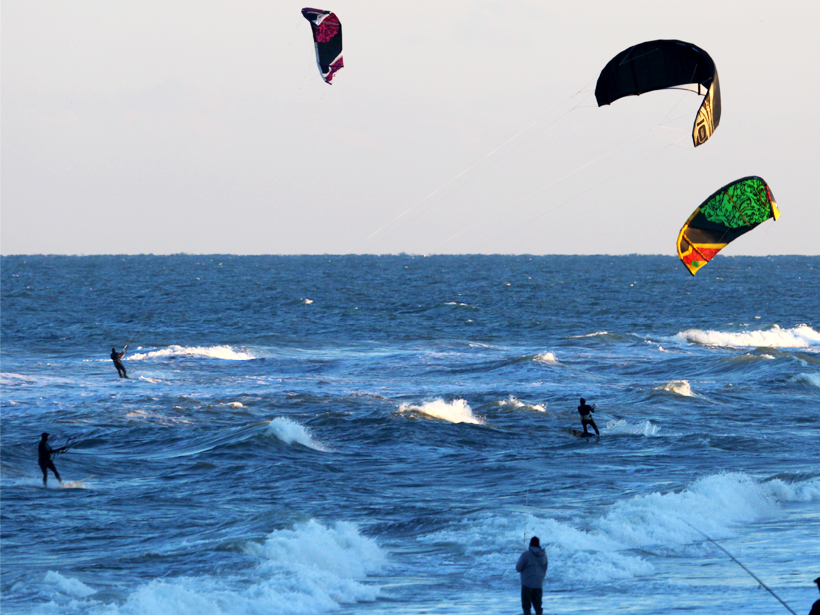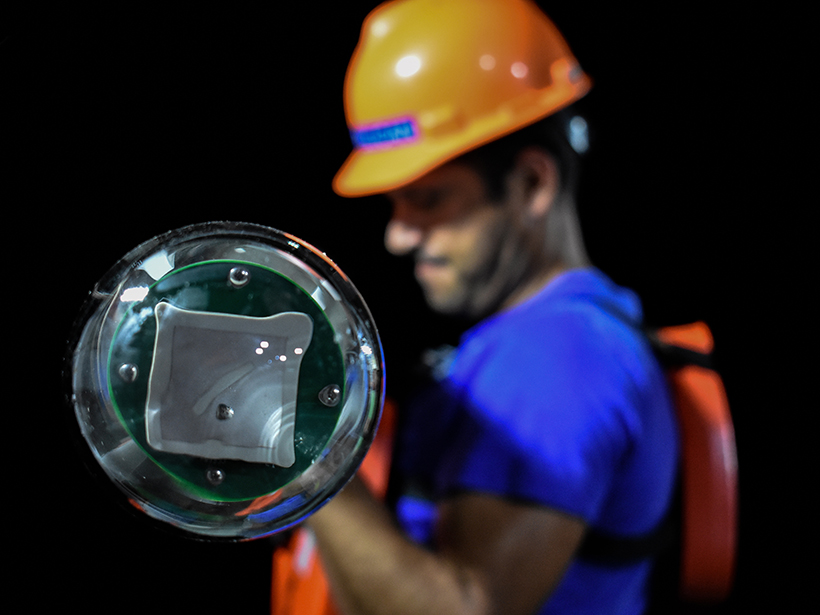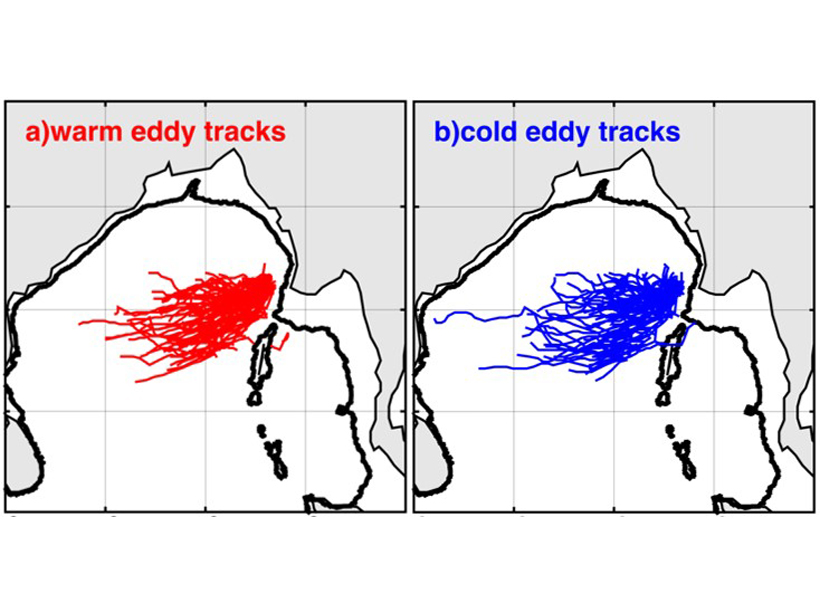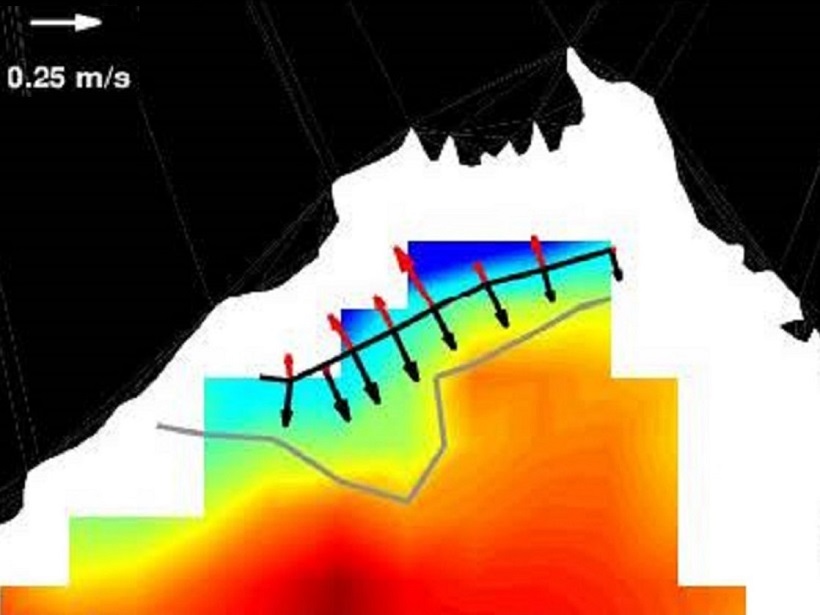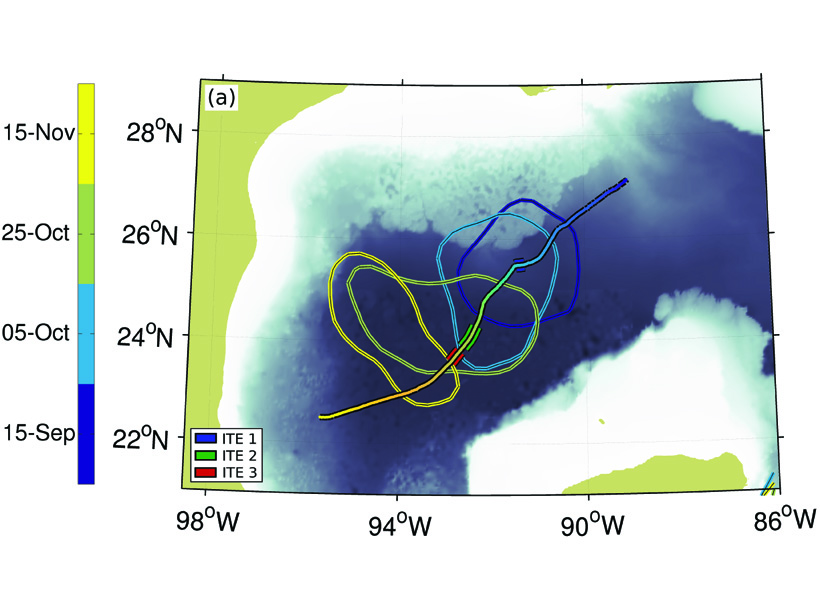A new study shows that low-latitude weather can affect distant glaciers.
currents
Tiny Marine Shells Reveal Past Patterns in Ocean Dynamics
A 400,000-year calcium carbonate record from the ocean floor sheds light on deep-ocean circulation and on mechanisms driving climate patterns and atmospheric carbon dioxide concentrations.
Why Is the Gulf of Maine Warming Faster Than 99% of the Ocean?
The Gulf of Maine’s location at the meeting point of two major currents, as well as its shallow depth and shape, makes it especially susceptible to warming.
Satellite Observations of Ocean Surface Winds and Currents
Florida State University workshop on Satellite Observations of Ocean Surface Winds & Currents; La Jolla, California, 18–19 May 2018
Deep Floats Reveal Complex Ocean Circulation Patterns
Acoustically tracked floats drift far below the ocean’s surface, providing fresh discoveries about deep-sea currents. A new archive gathers decades’ worth of float data into a central repository.
Eddy Generation in the Central Bay of Bengal
Eddies in the central Bay of Bengal are generated near the eastern boundary of the basin, related to equatorial wind forcing, nonlinearity, and the topographic “bump” of Myanmar.
Can Coastal Surface Currents Improve Hurricane Forecasts?
An idealized model explores whether hurricane intensity forecasts could potentially be improved by incorporating coastal surface currents data.
Christopher N. K. Mooers (1935–2018)
This passionate physical oceanographer, a leader and catalyst in coastal studies, explored many facets of nearshore circulation and advanced the modeling and forecasting of coastal dynamics.
Dispersal of River Water by Ocean Eddies and Shallow Ekman Flow
Low-salinity water from the Ganga-Brahmaputra river is transported by mesoscale eddies in the Bay of Bengal, but when the monsoon winds strengthen, a shallow “Ekman” flow dominates dispersal of water.
Smaller Eddies Found Within Eddies
A glider survey observed three small eddies embedded within a larger scale eddy associated with the Loop Current in the Gulf of Mexico.




